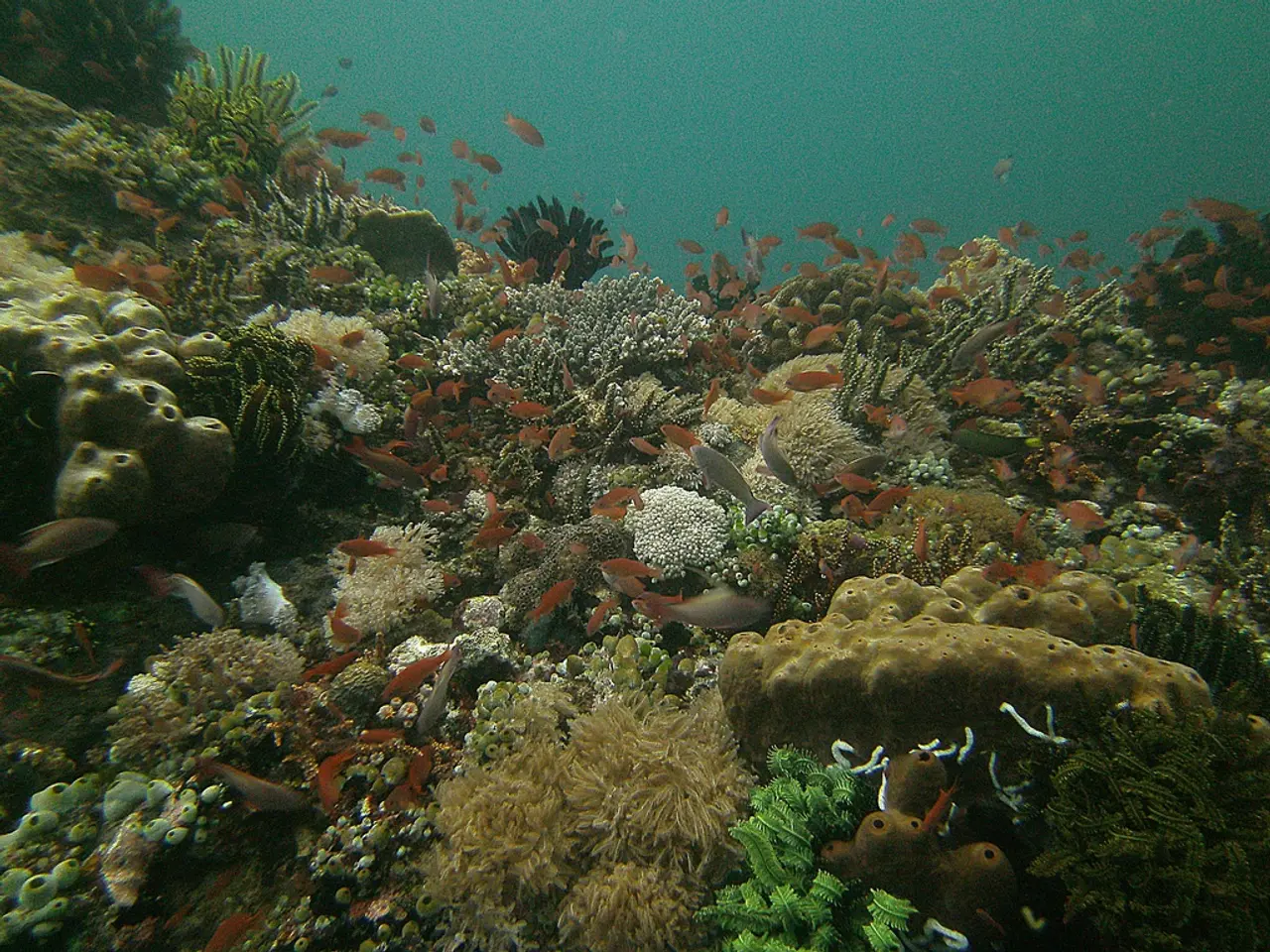Researchers at Scripps receive close to $5 million to investigate the causes of harmful and poisonous algal outbreaks
The coastline from Monterey Bay to Santa Barbara to Del Mar is set to be the focus of a significant research project, as scientists from the University of California San Diego (UCSD) and Scripps Oceanography team up to investigate the causes of deadly oceanic algal blooms. This study, funded by a $4.9 million grant from the National Oceanic and Atmospheric Administration (NOAA), is part of NOAA's Ecology and Oceanography of Harmful Algal Blooms (ECOHAB) programme, a nationally competitive research funding programme.
Led by Professor Bradley Moore, the team aims to uncover a predictable period for harmful algal blooms, particularly those produced by the diatom Pseudo-nitzschia, which can produce domoic acid. This potent neurotoxin can cause memory loss, seizures, and even death in larger mammals, including humans, when consumed.
The geographic scope of the project stretches along the coastal waters of California, with the team planning to set out on a series of month-long sea expeditions in open water to search for harmful blooms next fall and the following spring.
To predict toxic blooms, the team will employ a combination of underwater technologies and genetic analysis. Water sampling and microscopy will be used to count the number of Pseudo-nitzschia cells directly from water collected by underwater samplers, while molecular genetic techniques will identify genes responsible for domoic acid synthesis.
In situ sensors and autonomous platforms, such as Wirewalkers and a torpedo-like autonomous underwater vehicle, will also be deployed to predict when algal blooms will turn toxic. These technologies will help detect and follow subsurface algal blooms, providing insights into the conditions of the deeper ocean.
Furthermore, the team will sequence the genome of Pseudo-nitzschia strains to better understand the diversity and distribution of domoic acid-related genes. They will also test near wastewater discharge hotspots in Orange County to investigate the hypothesis that water pollution could contribute to toxic algal blooms.
Clarissa Anderson, a biological oceanographer, emphasised that underwater robots will help detect and follow subsurface algal blooms, providing insights into the conditions of the deeper ocean. The study also aims to sample deeper water and detect subtle changes in gene expression related to harmful algal blooms.
Maggie Broadwater from the NOAA ECOHAB Research Program stated that the project continues NOAA's efforts to develop ecological forecasts for harmful algal blooms. The ultimate goal is to vastly improve predictions of bloom toxicity, leading to earlier and more accurate warnings and improved mitigation strategies.
UC San Diego is one of the top 15 research universities in the world, driving innovation and change to advance society, propel economic growth, and make the world a better place. Scripps Oceanography, one of the world's most important centers for global earth science research and education, offers unparalleled education and training for the next generation of scientific and environmental leaders.
Understanding the environmental triggers and genetic signatures of toxin production is crucial in developing early warning systems to mitigate and manage harmful Pseudo-nitzschia blooms. These blooms can cause widespread marine wildlife mortality and human health impacts, leading to fishery closures. The deadly transformation of Pseudo-nitzschia blooms is driven by a complex interplay of nutrient, temperature, and water column conditions alongside biological factors, and prediction relies on advanced molecular and environmental monitoring technologies.
- This oceanographic research, led by Professor Bradley Moore, focuses on science related to dangerous oceanic algal blooms caused by the diatom Pseudo-nitzschia and their potential connections to medical-conditions, such as memory loss, seizures, and even death in humans.
- By employing a combination of underwater technologies, genetic analysis, and environmental-science methods, the research team aims to predict the occurrence of toxic algal blooms caused by Pseudo-nitzschia and develop ecological forecasts to improve health-and-wellness, particularly in relation to neurological-disorders.
- The study, funded by the National Oceanic and Atmospheric Administration's (NOAA) Ecology and Oceanography of Harmful Algal Blooms (ECOHAB) program, also investigates the impact of climate-change on the occurrence of harmful algal blooms along the California coastline.
- The findings from this research project in environmental-science have the potential to contribute valuable insights to the ongoing efforts of UC San Diego, Scripps Oceanography, and NOAA in understanding and mitigating the effects of harmful algal blooms on marine wildlife, human health, and the environment as a whole.




